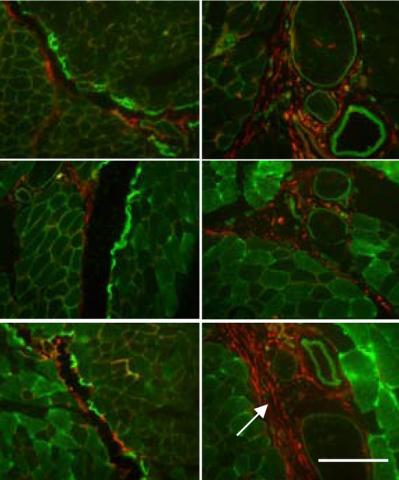
Research profile: Dr. Marni Boppart
Dr. Marni Boppart, an associate professor in the Department of Kinesiology and Community Health, focuses her research on understanding the molecular and cellular mechanisms responsible for muscle repair and growth after exercise. This information is then used to develop novel cell- and pharmacological-based interventions that can prevent or treat loss of muscle mass and function with age.

Her early research identified an adult stem cell in muscle, mesenchymal stem cells, that accumulated in response to vigorous exercise and released growth factors that spurred other muscle cells to fuse and generate new muscle. A follow-up study determined that mesenchymal stem cells helped to rejuvenate skeletal muscle after resistance exercise.
In a recent study, Dr. Boppart and her co-researchers, including KCH colleagues Drs. Ken Wilund and Jeff Woods, examined the impact of exercise and statins on muscles. The most common side effect of statins, which are widely prescribed to reduce high cholesterol, is skeletal muscle myopathy, or muscle weakness. Dr. Boppart’s team examined the extent to which acute and chronic exercise influenced statin-induced myopathy in mice with high cholesterol.
Some mice, bred to have hypercholesterolemia, were injected with statins while another group received salt water injections. Those receiving statin injections fell into three groups: one that engaged in no exercise; one that had received exercise training prior to the initiation of statin injections; and one whose exercise training coincided with the administration of statins. The researchers hypothesized that mice who had received exercise training prior to statin administration would have some protection against statin-induced myopathy, while exercise coinciding with statin administration would exacerbate statin-induced myopathy.
All the mice with running wheels used them vigorously at the start of the study, but Dr. Boppart’s team found after a month that while the mice on statins had lower cholesterol than the non-statin group, they had run significantly fewer miles, and their activity had declined throughout the study. In addition, they lost grip strength and their leg muscles tired much sooner than muscles of the non-statin group. These problems were not greater in the group taking statins and exercising versus the sedentary group taking statins, leading the researchers to conclude that the exercise itself had not worsened the effects. Moreover, mice taking statins did not experience the muscle development and desirable cellular changes related to efficient energy production from exercise that mice not taking statins developed. The results suggest that taking statins to control cholesterol may lead users to disengage from physical activity.
As Dr. Boppart continues her research to understand and combat age-related muscle loss, she will be assisted by both graduate and undergraduate research assistants. Undergraduate students can gain valuable experience from working in a research lab, as Garret Waterstradt, who assists Dr. Boppart in the Molecular Muscle Physiology Lab, reports. Learn more about Garret’s work.
